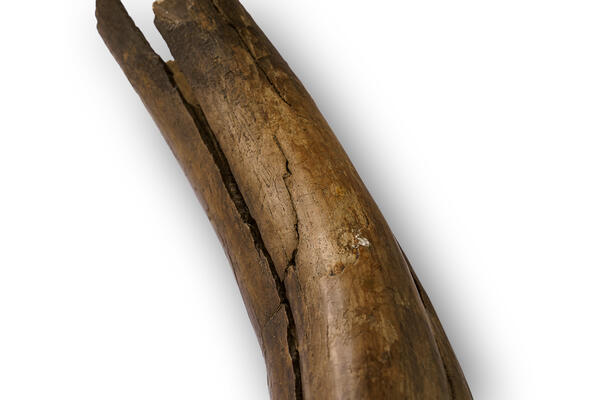The Pleistocene Epoch began more than 2.5 million years ago and ended approximately 11,700 years ago. During that time, Eurasia was characterized by the widespread distribution of megafauna — various species of large animals. One such species was the mammoth. These mammals were proboscideans (order Proboscidea). They were genetically similar to modern-day Asian elephants, but differed in several significant ways.
Mammoths were larger than elephants, with a more massive body, shorter legs, smaller ears, longer curved tusks, thicker fur, and thicker skin. They stood at a height of approximately 5.5 meters and weighed around 15 tons, requiring approximately 180 kg of food daily.
Their main food source consisted of grasses that grew up to two meters in height. Willow, dwarf birch, alder, and larch also grew in lowlands and near riverbanks, providing additional food for the mammoths. To chew coarse plant material, mammoths had molars with multiple thin plates of enamel.
A dry and cold climate made it easier for the mammoths to find various grasses. Using their trunks and tusks, they shoveled shallow snow aside to get to the food. There was a hump on the backs of mammoths, which was previously thought to be formed by elongated spiny protrusions of the vertebrae. However, later findings revealed that there were no bones in the hump of mammoths. Instead, like camels, these animals accumulated large reserves of fat in their humps.
The earliest representatives of mammoths emerged at the beginning of the Pliocene period, approximately 5 million years ago, in what is now Africa. They subsequently spread to Europe, Asia, and even North America during the Pleistocene era. This expansion was greatly facilitated by the ice age and the expansion of tundra and steppe regions.
Genetically, mammoths can
be divided into three groups: Asian mammoths, which appeared more than 450,000
years ago; American mammoths, which emerged around 450,000 years ago, and
intercontinental mammoths, which migrated from North America approximately
300,000 years ago. Due to the warmer temperatures and increased humidity, the
population of mammoths began to decline significantly. The last representatives
of this species went extinct on Wrangel Island approximately 4,000 years ago.




